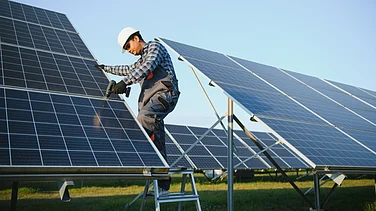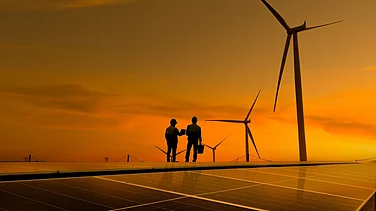From miracle material to dangerous convenience, in seven profligate decades, plastics have emerged as one of the greatest existential threats to the planet’s future. But has that stopped—or even slowed—their production? No way. Since the 1950s, the world has churned out a Himalayan 8.3 billion metric tonnes of plastic—more than one tonne for every person alive today and enough to wrap the entire Earth in clingfilm more than 1,500 times.
And still, the numbers continue to spiral. By 2050, the world is expected to produce over 800 million tonnes of plastic every year—that’s add 80,000 Eiffel Towersof plastics annually to the planet’s burden. Worse, if this trajectory holds, the emissions linked to the production, use and disposal could reach 287 billion tonnes by 2100—equivalent to burning through more than half of the world’s remaining carbon budget in just one sector.
Designed to last forever, yet often used only once, plastic now saturates every layer of our environment—from the depths of the Mariana Trench to the peaks of the Himalayas, from the guts of marine animals to the blood of new-borns. It is not merely undermining ecosystems—it is shaking the very foundations of ecological balance, climate stability, and human health.
This World Environment Day, we trace the plastic value chain from source to waste, spotlighting the deepest faultlines in the system—and examining solutions, both active and emerging, that offer a path out of this slow-burn catastrophe.
1. Raw Material Extraction: Fossil Fuel Dependency
At the heart of the plastic economy lies its greatest contradiction: it is built on fossil fuels. The value chain begins with the extraction of crude oil and natural gas, from which plastic precursors like ethylene and propylene are derived. This process is energy-intensive and carbon-heavy.
According to the report Circular Economy: A Powerful Force For Climate Mitigation, global plastic production could result in up to 287 billion tonnes of emissions by 2100 if current trends continue.
Current Fixes:
Bio-feedstocks sourced from sugarcane, algae, or agricultural waste are being deployed to replace fossil feedstocks. Brazil and Thailand have pioneered sugarcane-based bioplastics.
Pyrolysis oil made from plastic waste is another solution. It enables chemical recycling by breaking plastics down into reusable hydrocarbons.
Emerging Fix:
CO2-based polymers, where captured carbon emissions are transformed into plastic precursors, offer dual benefits: waste carbon utilisation and fossil fuel avoidance. Startups in Europe and the US are piloting these technologies.
2. Distribution and Storage: Hidden Environmental Costs
Plastic’s ubiquity is supported by a vast and complex logistics web—trucks, trains, warehouses, and cargo ships. This segment of the value chain is often overlooked in climate discussions but contributes significantly to emissions and waste.
Current Fixes:
Route optimisation software helps cut fuel use and emissions in logistics.
Green warehouses using solar power, water harvesting, and waste-minimisation techniques are being adopted by leading logistics firms.
Emerging Fix:
Blockchain-enabled traceability systems are being developed to track plastic from source to shelf, helping identify inefficiencies and reduce losses in transit.
3. Packaging: Convenience vs Consequence
Packaging is among the most visible and challenging segments of the plastics value chain. Lightweight, durable, and cheap, plastic packaging is used across industries—from FMCG to electronics. But much of it is single-use and ends up as litter or landfill.
Current Fixes:
Design for recyclability is gaining momentum. Companies are shifting to mono-material packaging that can be easily recycled.
Bio-based alternatives, like seaweed films and coconut husk containers, are replacing conventional plastics in niche markets.
Emerging Fix:
Smart packaging with embedded sensors could promote responsible usage and disposal. These sensors can guide consumers on reuse or recycling.
4. Recycling: The Broken Loop
Recycling is the weakest link in the plastic value chain. Although it is the key to achieving circularity, global recycling rates remain dismally low. In India, despite having an informal sector with strong collection networks, lack of infrastructure and segregation hampers large-scale recycling. Much of recycled plastic, therefore, barred from being used pack edible products, including cooked food in India.
Current Fixes:
Advanced sorting technologies like optical scanners and AI-based robots are increasing precision in segregation.
Closed-loop partnerships are being forged by companies to reuse their own waste—e.g., food giants turning used wrappers into furniture or pavement tiles.
A McKinsey report revealed that in five of six packaging categories, plastics had lower GHG emissions than alternatives like glass or aluminium. This shifts the conversation from demonising plastic to managing it better.
Emerging Fix:
Enzymatic recycling uses engineered enzymes to break down even tough plastics like PET and multi-layer films into base monomers, which can be reconstituted into virgin-quality plastics.
5. Consumption & Behaviour: The Culture of Disposability
Ultimately, plastic pollution is driven by how we consume. Single-use culture, poor segregation at source, and lack of awareness exacerbate the crisis.
Current Fixes:
Extended Producer Responsibility (EPR) policies are pushing brands to take responsibility for post-consumer waste.
Consumer awareness campaigns and gamified recycling apps are nudging behavioural change.
Emerging Fix:
AI-powered nudging systems, embedded in apps or smart bins, can learn from user behaviour and prompt sustainable actions.
The plastics value chain is both a driver of convenience and a source of crisis. But solutions—ranging from biopolymers to blockchain—are already making a difference. What the world needs next is coordination, investment, and scale. A truly circular plastic economy is not just an environmental imperative—it is an economic opportunity waiting to be unlocked.
As we mark this World Environment Day, let’s remember: plastic isn’t the enemy. Mismanagement is. The path forward lies in innovation, integration, and a global commitment to change.

























